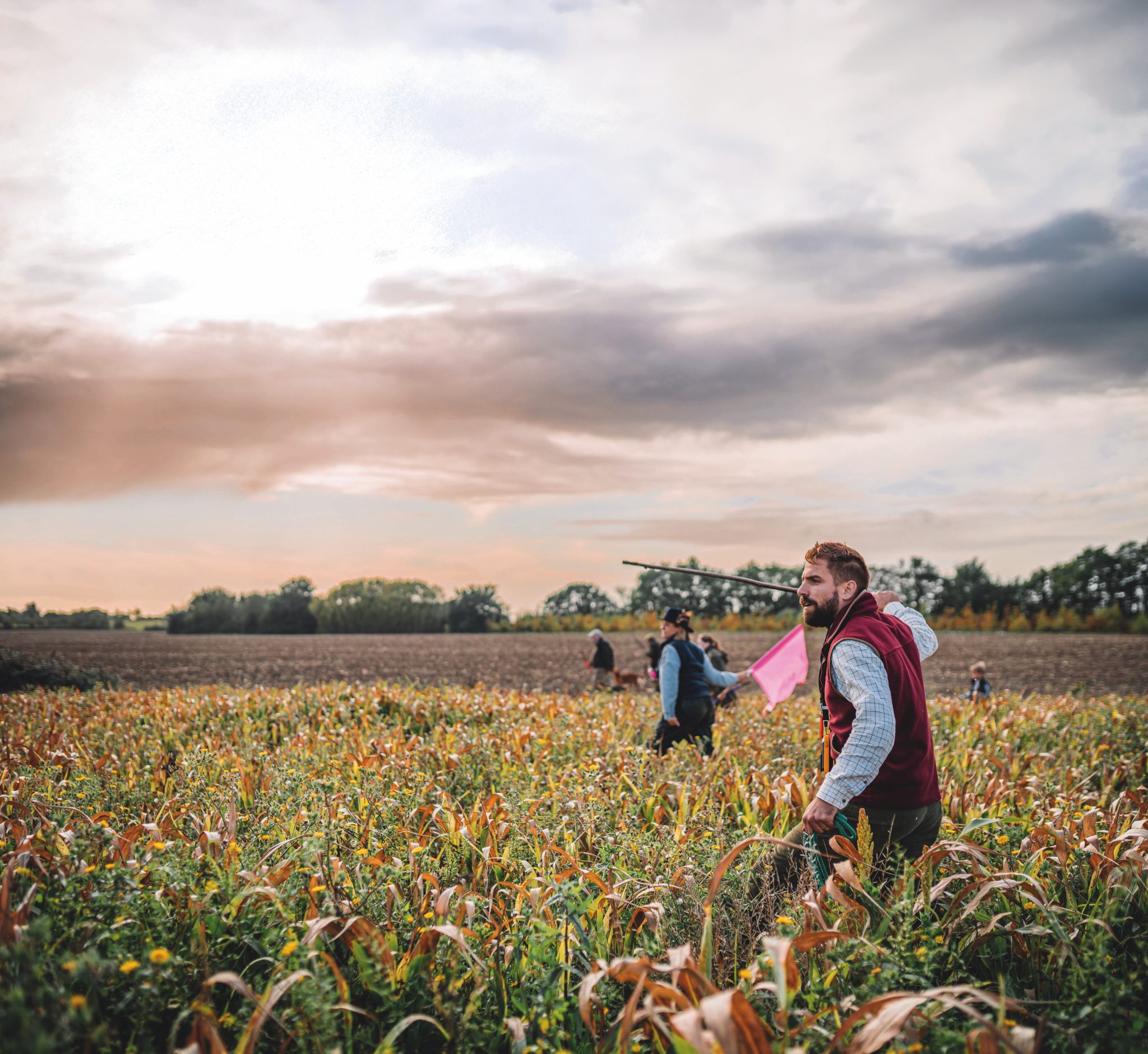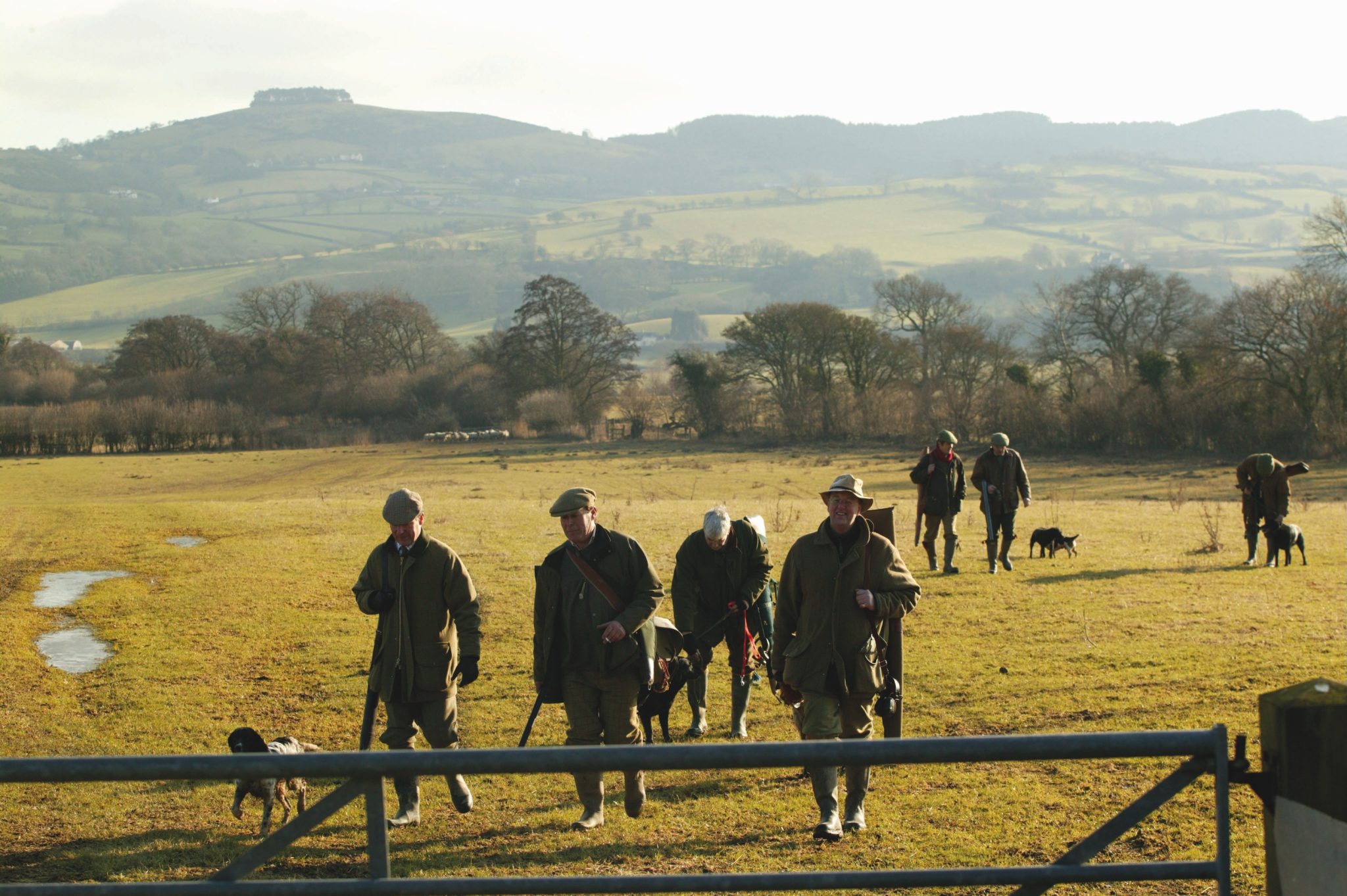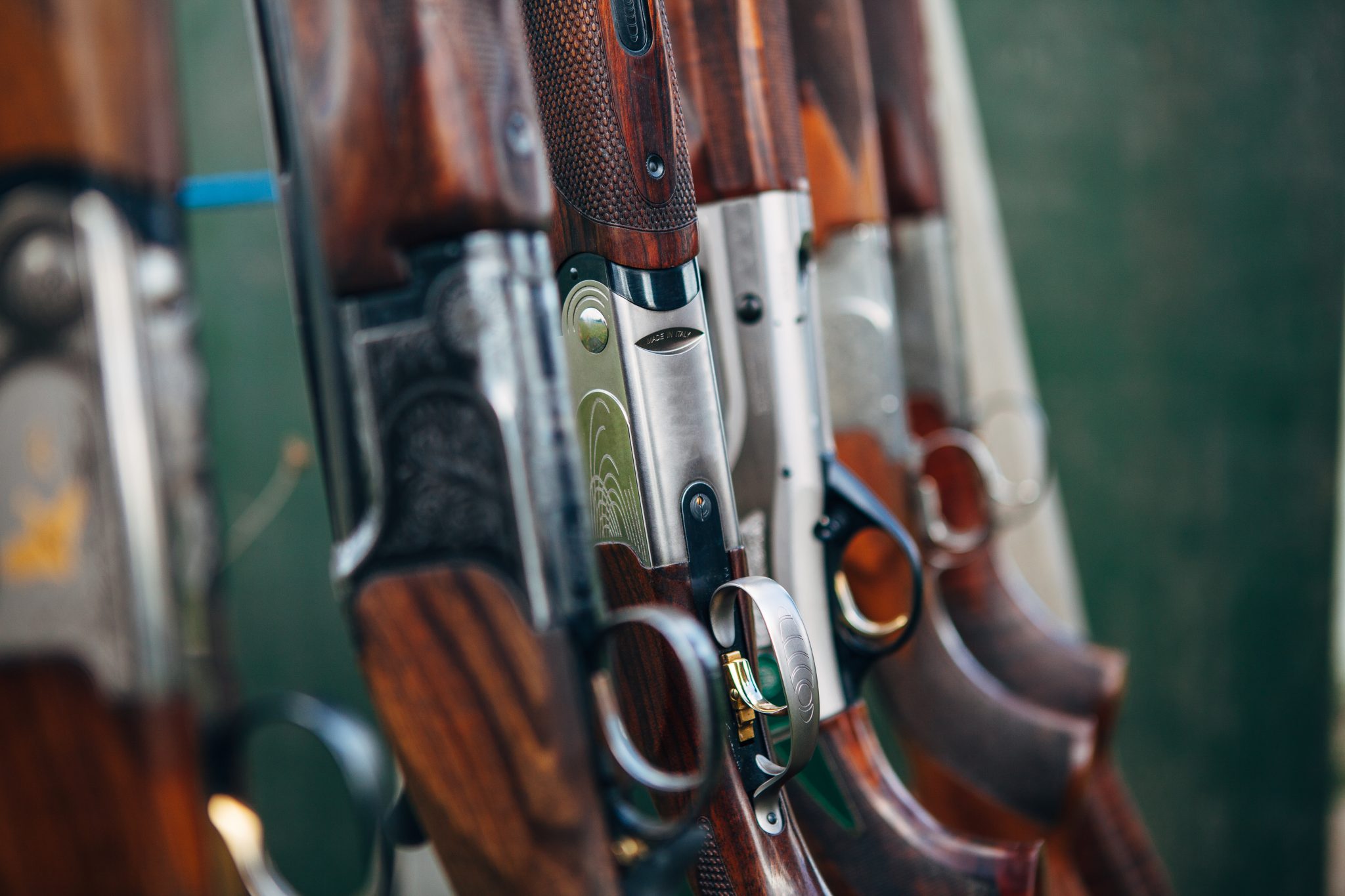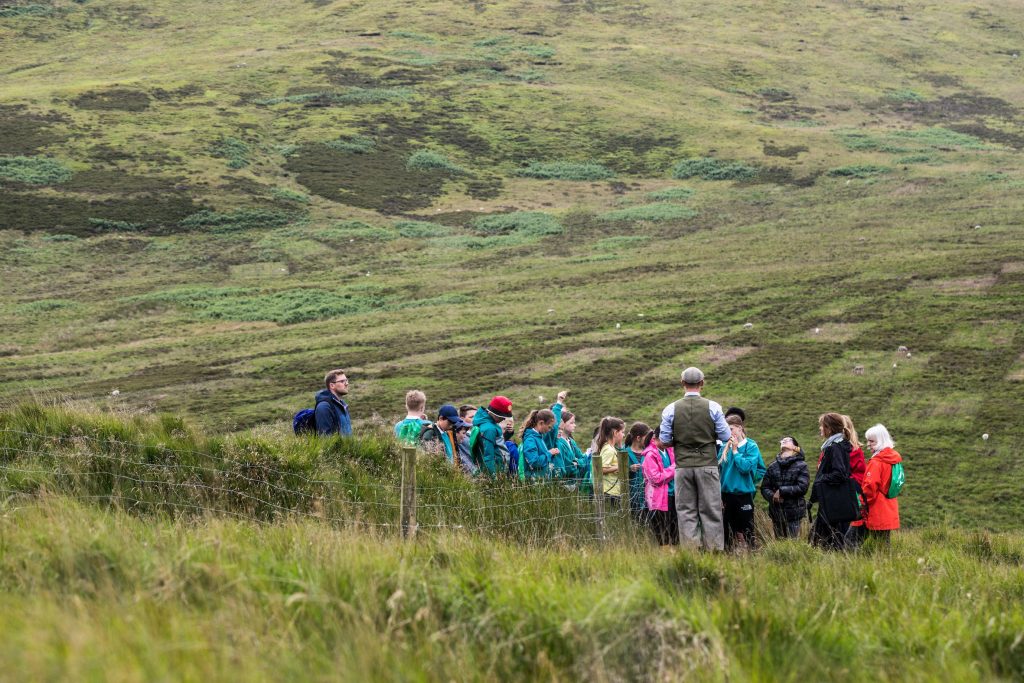Win CENS ProFlex DX5 earplugs worth £1,149 – enter here
West Wycombe Shoot
<strong>David Frost reports on the backstage action</strong>
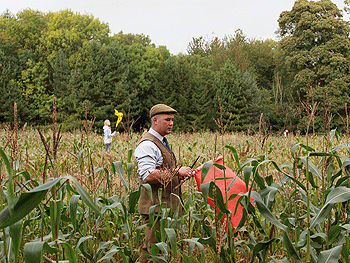
We all know that without Guns there wouldn’t be a shoot. Yet without the beaters and other auxiliaries the day wouldn’t happen at all, and I was there to find out more about their various roles and how they work as a team to create a memorable experience for all.
The estate is situated in the lovely rolling Chilterns, hills which lend themselves very well to partridge and pheasant shooting, with enough variety to please the good Shots without frightening those lower down the skill range.
The estate has been in the hands of the Dashwood family for more than 300 years, with driven shooting taking place since the late 19th century. The shoot now offers let days through E. J. Churchill and, in between, there are days for friends andfamily. The present owner, Sir Edward Dashwood, is a passionate and skilled Shot.
The first drive was Kenny’s, which I spent with the Guns and pickers-up. It’s a classic partridge drive where the birds are pushed downhill and over a hedge, from where they provide testing shots, both overhead and crossing.
Alistair Hunt has been picking-up on the estate for about eight years and became the head picker-up last season. I asked him how he decides where to place the pickers-up for this sort of drive.
“We aim to get out and cover every bit of ground”, he replied. “You need to start well back and work in towards the Guns. There are usually between six and 10 pickers-up.” As for his choice of dogs, Alistair says, “I used to run Labradors but when I started up again after a gap I got a working cocker and have had them ever since. They keep me young.”
The picking-up team is unusual in having a pair of chocolate Labradors, which belong to Jim Branch. I asked Jim why he prefers chocolates to the more common black or yellow. “They’re the same animals but different colours,” he said. “I started with chocolates many years ago and have become known for them. The disadvantage is that there aren?t many chocolates in the field, so as soon as one misbehaves everyone knows whose it is. Provided you keep away from show stock there’s no problem. They’re much better than my wife’s spaniels!”
Not so, replied Jim’s wife, Mary-Jane, who prefers springer spaniels and who has been picking-up on the shoot for more than a dozen years. “I was brought up with spaniels and wouldn’t be without one,” she said. I asked her what makes a good picker-up. “Someone who watches the birds and picks-up runners well behind the Guns, but leaves any Gun with a dog to pick his own birds. The beauty of coming here is there’s such a variety of drives and it has a lovely atmosphere.”
Two contrasting drives
We fitted in another two drives before it was time to pause for lunch. Thatch showed some stunning partridges, many of which sailed off over the nearby woods.The long slope behind the Guns means that the birds set their wings and can glide a considerable distance if hit.
I caught up with the beaters for Grove. Here, the birds are driven round a belt of trees which, like Kenny’s, provides both overhead and crossing shots for the Guns in the valley bottom. Careful co-ordination of the different groups of beaters is needed as they bring the ground in to ensure no birds escape at the side. Grove can be a challenge for the pickers-up too, as a pricked bird may well go on for more than a quarter of a mile.
Welcome break
They say an army marches on its stomach and much the same can be said of beaters. Lynda Elliot is in charge of making sure bellies remain suitably full. She’s been doing the lunches for around 20 years.
“I find that beaters like quiches, pies and salads in the early part of the season,” she said. “Later, they prefer hot food, such as stews and roasts. Roast potatoes are a particular favourite. Everything is topped off with bread, cheese, fruit and a pudding. I like to use fresh and local produce. On days when they shoot through we often have a picnic from the back of my Disco.”
Multi-tasking team
The lunch break provided me with an opportunity to talk to father-and-son team, Michael and Christian Drewett. Michael told me he’s been coming since he moved to the area 17 years ago, and does a variety of jobs for the shoot, including running a section of the beating line and loading and driving the forward control Land Rover, which is often used as transport for the Guns or loaders.
Christian started off as a beater at the age of six and now drives the tractor with the beaters trailer. “It’s quite a responsibility,” he said. “You’ve got 30 beaters in the back and are driving in all weathers over all sorts of ground. There aren’t many people prepared to take that on. I like to beat as well, when the opportunity offers.”
A successful shoot such as this doesn’t just happen. It’s the result of some careful planning and organisation on the part of headkeeper David Swallow, who has to work out how many helpers he needs and then make sure everyone is in the right place at the right moment. “I’m passionate about what I do,” he said, “and Sir Edward is, too. You couldn’t get a better boss.”
David’s underkeeper is Alistair Cross, now in his third season. He is impressed by the way partridges stay in the pens for only 24 hours before being let out into the wild. As the day showed, they do tend to hang around – a lesson that other partridge shoots might usefully learn.
One noticeable feature of the shoot is the complete lack of keeper debris, as pens and feeders are well out of sight. There’s no sign of the general rubbish that disfigures some shoots, either. Fired cases are picked up at the end of every drive. John Harris has run the gamecart for many years. On partridge days the birds are put in trays, which is much easier with a side-loading gamecart than a rear-loading one.
French connection
John was assisted for the day by Mathilde Tricqueneaux, whose husband, François, is a professional hunter in the Central African Republic. He has English-speaking clients and was over for a couple of weeks to improve his English. He acted as loader for the day. Mathilde and François have also been working with the keepers and helping to manage the shoot. “It’s a lovely, lovely place,” said Mathilde, “and the English have been very kind to us.”
Radio man Mark Harris, who ran a section of the beating line, is another long-term stalwart of the shoot, this being his 24th season. “When I started, it was two shoots, but has since been combined into one. I’ve helped out with keepering, beating, and done most other things. I’d like to think I’d be here in another 25 years.”
The final drive was Triangle, where again I joined the beaters as they blanked-in towards the main covert and then took it slowly downhill towards the waiting Guns. We had a grandstand view of the Gun line and in the distance we could see tiny specks which resolved themselves into the pickers-up down by the river, far behind the Guns. I could understand why this is Alistair Hunt’s favourite drive.
The weather was fine all day and it was evident the Guns had every bit as much fun as all the other people who make up a successful shoot day.
But perhaps the last word should come from Sir Edward: “I like to see the birds as wild as possible. We put the partridges out as early as we can and before the harvest so they are well used to the ground. The Gun positions are not pegged, which enables me to place the Guns according to the wind so they get the best shooting.”
Related Articles
Get the latest news delivered direct to your door
Subscribe to Shooting Times & Country
Discover the ultimate companion for field sports enthusiasts with Shooting Times & Country Magazine, the UK’s leading weekly publication that has been at the forefront of shooting culture since 1882. Subscribers gain access to expert tips, comprehensive gear reviews, seasonal advice and a vibrant community of like-minded shooters.
Save on shop price when you subscribe with weekly issues featuring in-depth articles on gundog training, exclusive member offers and access to the digital back issue library. A Shooting Times & Country subscription is more than a magazine, don’t just read about the countryside; immerse yourself in its most authoritative and engaging publication.



